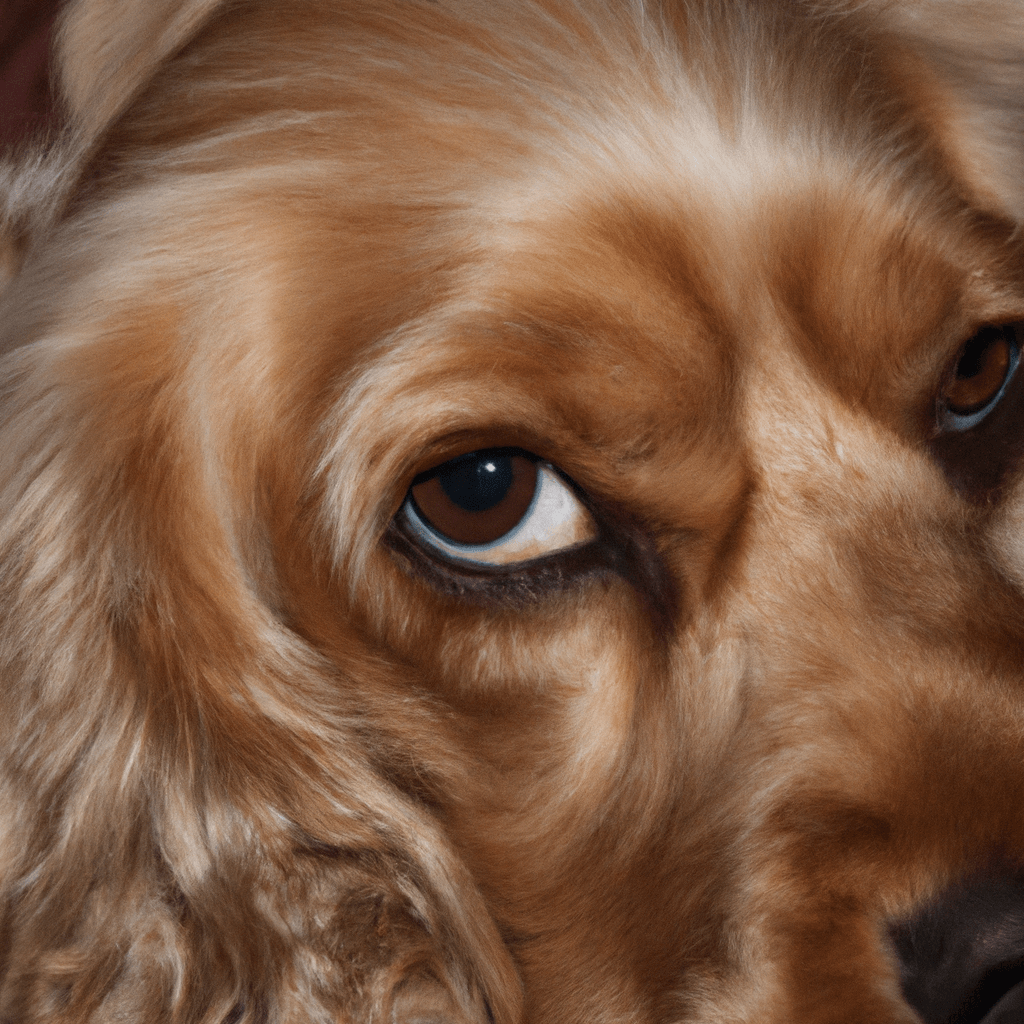Known for their sweet dispositions and eye-catching features, Cocker Spaniels are adored companions. Their expressive eyes and playful nature readily win the hearts of many individuals. Cocker Spaniels, like any breed, are prone to specific health difficulties, one of which being their eyes. Cocker Spaniel’s eye issues can vary from small discomforts to more significant problems that need careful care and attention to handle properly. In this article, we’ll Explore the most frequent eye problems in Cocker Spaniels and how to prevent, recognize, and manage them.
The most common eye problems that occur in Cocker Spaniels
Cherry Eye: This condition occurs when the gland in the third eyelid becomes swollen and protrudes, resembling a cherry. Even though it may be alarming for owners, the condition may not be painful for the dogs. In most cases, surgery is necessary to correct the eyelid position.
Entropion: Entropion is a condition where the eyelid rolls inward, causing the eyelashes to rub against the cornea. This situation can lead to discomfort, redness, and even sores on the clear part of the eye. Surgery is usually required to correct the eyelid’s position and alleviate the discomfort.
Ectropion: In contrast to entropion, ectropion is when the lower eyelid droops outward. The condition can lead to excessive eye tearing, inflammation, and susceptibility to eye infections. While surgery might be needed in severe cases, it can often be managed with proper care and attention.
Cataracts: Cataracts are characterised by cloudiness in the lens of the eye, leading to impaired vision. While cataracts are commonly associated with aging, Cocker Spaniels are also genetically inclined to develop them at an earlier age. Surgery can be performed to remove cataracts and restore vision if necessary.
Progressive Retinal Atrophy (PRA): PRA is a genetic issue that makes the cells in the back of the eye break down slowly. This leads to losing eyesight little by little until the dog can’t see anymore. While there is no cure for PRA, early detection through regular eye exams can help manage the condition and provide affected dogs with a better quality of life.
Prevention and Care
Preventing Cocker Spaniel eye problems starts with responsible breeding practices. Reputable breeders perform regular health screenings on their breeding dogs to minimize the risk of passing on hereditary eye conditions. If you’re thinking about adding a Cocker Spaniel to your family, opt for a breeder who places a high value on the health and happiness of their dogs.
Regular visits to the vet are important to keep your Cocker Spaniel’s eyes healthy. Regular eye exams can help detect issues in their early stages when they are more manageable. Moreover, ensuring your dog’s eyes are tidy and without any dirt can lower the risk of them getting red and infected. Use a damp cloth to gently wipe around the eyes, being careful not to get any cleaning solution directly in the eyes.
Taking care of eye problems
If you notice any changes in your Cocker Spaniel’s eyes, such as redness, excessive tearing, cloudiness, or squinting, it’s important to consult a veterinarian promptly. Taking action early can stop small problems from getting worse. When it comes to surgery, it’s normal to worry about your beloved pet’s health. Talk in-depth about the procedure with your vet, and feel free to ask any questions you might have. Surgery for conditions like cherry eye or entropion is generally routine and well-tolerated by dogs. During the healing phase, your pup might need some additional attention, like giving them the prescribed eye drops and ensuring they don’t touch or scratch their eyes.
Living with a Cocker Spaniel with vision impairment requires adjustments to your home environment. Keep furniture and objects in familiar places to help your dog navigate easily. Avoid rearranging furniture frequently, and use rugs or mats to define pathways. When you spend quality time with your dog, words and physical affection become important methods of communication.
Final Verdict
Cocker Spaniels are delightful companions that bring joy and love to their families. Being aware of possible eye Problems that can impact the breed is crucial to making sure they stay healthy.
Responsible breeding procedures, frequent veterinary treatment, and close monitoring can all help to avoid, recognize, and manage Cocker Spaniel’s eye problems.
With proper care and support, Cocker Spaniels can live healthy, happy lives, despite being predisposed to some conditions. Take proactive steps to keep your Cocker Spaniel’s eyes healthy and as vibrant as possible for many years to come.
FAQ
Are cocker spaniels prone to eye problems?
Cocker Spaniels are more likely to develop acute closed-angle glaucoma. Redness of the eyeball, cloudiness of the cornea, bluish appearance of the eye, semi-dilated pupil, squinting, copious tears, hanging the head down, and loss of vision are all symptoms.
What causes cherry eye in Cocker Spaniels?
Dogs younger than a year old frequently get cherry eyes. When the tiny ligament that maintains the third eyelid gland in place stretches or breaks, the disease occurs. Veterinarians aren’t sure why this happens, and treatment almost invariably involves surgery.
What is the most common eye problem in dogs?
A prevalent eye infection in dogs is conjunctivitis, often referred to as pink eye.
When should I worry about my dog’s eyes?
If your dog is showing signs of eye sensitivity, irritation, or discomfort, it’s important to take them to the veterinarian.
What home remedy for dog eye infection?
If your dog will allow you to gently rinse their eyes using saline solution and soft cotton balls.
